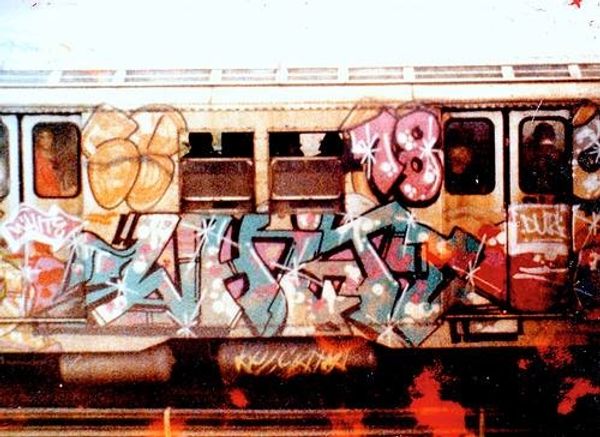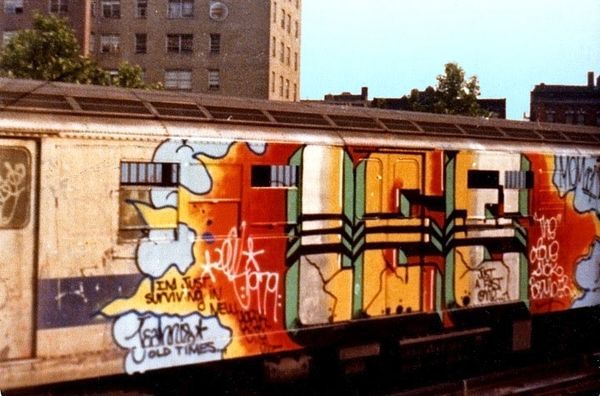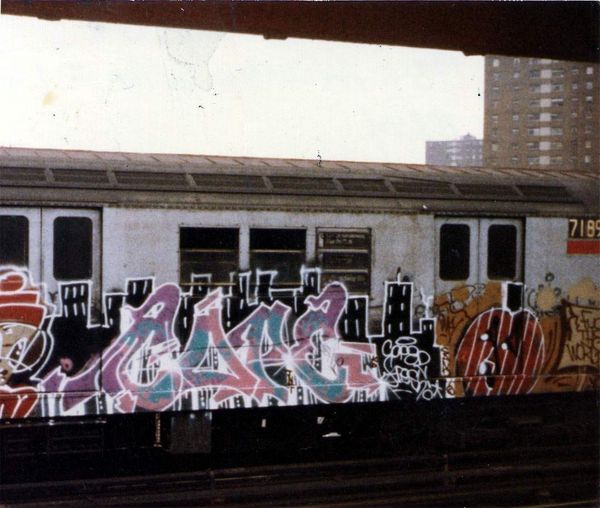
Dimensions: image/sheet: 13.34 × 74.93 cm (5 1/4 × 29 1/2 in.) mount: 24.5 × 87.5 cm (9 5/8 × 34 7/16 in.)
Copyright: National Gallery of Art: CC0 1.0
Curator: This electrifying piece, dating back to 1980, is entitled "Dealt Kel Henry." The vibrant work is attributed to Henry Chalfant and immediately evokes a spirit of youthful rebellion and urban grit. What are your initial impressions? Editor: Energy. Pure, raw energy, splashed across a train car. There’s a sense of urgency, almost a frantic pace, embedded in those bold, overlapping colors and jagged lines. It shouts, doesn't it? It grabs your attention and refuses to let go. Curator: Absolutely. Chalfant captured the ephemeral nature of New York City graffiti culture in that period. What you see here isn't just decoration, it's a form of visual protest and an assertion of identity by marginalized communities staking their claim in public spaces. This specific image exemplifies pop-art in action through aerosol and acrylic-paint media. Editor: Exactly, we must contextualize the socio-political climate. 1980, New York, faced economic crisis, racial tensions and neglect. Graffiti became a voice for those often ignored, turning subway cars into moving canvases. The choice of the medium itself - quick, easily accessible, sometimes stolen - becomes an act of defiance. Do you think it was as accessible as some may believe? Curator: Well, I disagree in the sense that many individuals and groups were competing and challenging one another for recognition of this particular art form. . Editor: A constant push and pull, this piece reveals those struggles. In my mind, Chalfant documents both an art form and a social movement where marginalized youth, many from communities of color, rewrite their narrative on the city's infrastructure. Curator: In terms of popular culture, I wonder how pieces like these impact perceptions and social movements through popular urban art movements of today. Editor: It encourages conversation by asking the viewer to recognize that visual representation shapes culture, policy, and power in important and necessary ways. The dialogue should shift towards amplifying the experiences of the vulnerable. Curator: It's a fitting tribute. Thank you. Editor: Anytime.
Comments
No comments
Be the first to comment and join the conversation on the ultimate creative platform.













